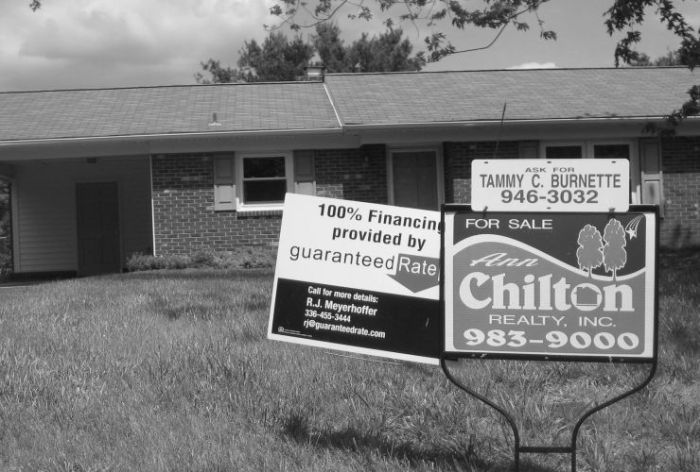RACE
Against Black Homeownership
The real estate market is so structured by race that black families will never come out ahead.
Image: Flickr
In January 1973, George Romney, Nixon’s enigmatic Secretary of Housing and Urban Development, administered an open-ended moratorium on its 1968 initiatives to open up single-family homeownership to low-income borrowers by providing government-backed mortgages. The experiment to make homeownership accessible to everyone ended abruptly with massive foreclosures and abandoned houses, but the questions ignited by these policies persisted. Some analysts insisted that the failure of HUD’s homeownership programs was proof positive that poor people were ill equipped for the responsibilities of homeownership. African Americans experience homeownership in ways that rarely produce the financial benefits typically enjoyed by middle-class white Americans.And they insisted that it more specifically implicated low-income African Americans as “incapable” homeowners. Others pointed to HUD’s obvious mismanagement of these programs as the real culprit in their demise, and, importantly, how the programs gave an industry already known for its racial bias new opportunities to exploit low-income African-Americans. But the lessons from HUD’s experiment were muddled by other economic sensibilities, including the commitment to private property and the centrality of homeownership to the American economy.
Today, homeownership, even for low-income and poor people, is reflexively advised as a way to emerge from poverty, develop assets, and build wealth more generally. The historic levels of wealth inequality that continue to distinguish African Americans from whites are powerful reminders of how the exclusion of Blacks from this asset has generationally impaired Black families in comparison with their white peers. Owning a home as a way to build wealth is touted as an advantage over public or government-sponsored housing. It grounds the assumption that it is better to own than rent. And the greatest assumption of all is that homeownership is the superior way to live in the United States. This, of course, is tied to another indelible truth that homeownership is a central cog in the U.S. economy. Its pivotal role as an economic barometer and motor means that there are endless attempts to make it more accessible to ever-wider groups of people. While these are certainly statements of fact, they should not be confused as statements on the advisability of suturing economic well-being to a privately owned asset in a society where the value of that asset will be weighed by the race or ethnicity of whoever possesses it.
The assumption that a mere reversal of exclusion to inclusion would upend decades of institutional discrimination underestimated the investments in the economy organized around race and property. The concept of race and especially racial inferiority helped to establish the “economic floor” in the housing market. One’s proximity to African Americans individually, as well as to their communities, helped to determine the value of one’s property. This revealed another reality. Markets, as in the means by which the exchange of commodities is facilitated, do not exist in vacuums, nor do abstract notions of “supply and demand” dictate their function. Markets are conceived and constituted by desire, imagination, and social aspirations, among other malleable factors. This does not mean that markets are not real, but that they are not shaped by need alone. They are shaped by political, social, economic, and in the case of housing, racial concerns. And in the United States, these market conditions were shaped and stoked by economic actors that stood to gain by curtailing access to one portion of the market while then flooding another with credit, capital, and indiscriminate access to distressed and substandard homes.
HUD’s crisis in its homeownership programs in the 1970s reveal deeper and more systemic problems with the pursuit of homeownership as a way to improve the quality of one’s life. It is undeniable that homeownership in the United States has been “one of the important ways in which Americans have traditionally acquired financial capital” and that the “tax advantages, the accumulation of equity, and the increased value of real estate property enable homeowners to build economic assets. . . . These assets can be used to educate one’s children, to take advantage of business opportunities, to meet financial emergencies, and to provide for retirement.” Investment in homeownership, and its role in the process of the personal accumulation of capital, has been fundamental to the good life in the United States.
Full Article and Source: Against Black Homeownership | Boston Review


